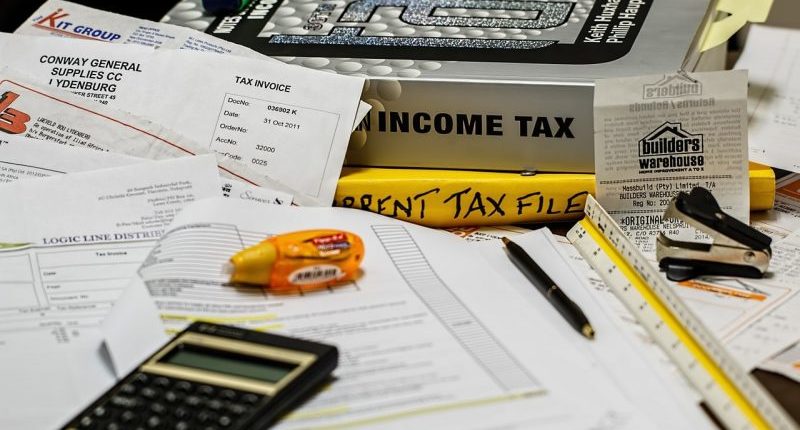Many people are unaware of TDS provisions while paying rent on the property and how to comply with the same. Let us understand the income tax provisions of rent in detail. With effect from 1st June 2017, the individual (tenant) should deduct TDS at 5% if they pay rent more than Rs 50,000 to their landlord. This provision is also applicable to the HUF. This is laid down under section 194IB of the income tax act.
Applicable to whom?
Every individual paying monthly rent above Rs 50,000 to the landlord should deduct TDS on rent. This is specified under Section 194IB of the Income Tax Act. This section is also applicable to HUF, which pays rent above Rs 50,000 to a landlord.
Note: This provision does not apply to those individuals/HUFs who are required to get their books of accounts audited under the Income Tax Act. They also deduct TDS on rent but under another section. They are required to deduct TDS under section 194I.
Section 194IB does not apply to companies, partnership firms, AOP, and BOI.
When to deduct the tax?
- If the tenant does not vacate the property during the year, then-
TDS must be deducted at the time of payment of rent – At the time of payment by any mode or credit in the books of accounts (for taxpayers who maintain books of account) for March, whichever is earlier.
- However, if the tenant vacates the property during the year, then-
At the time of payment of rent by any mode or credit in the books of accounts for the last month of tenancy, whichever is earlier.
For example:
Mr R is a salaried individual, and he is paying house rent of Rs 60,000 per month to the landlord. The rent agreement is for the period starting from 1st June 2019 to 31st May 2020. When should Mr R deduct TDS for rent paid to the landlord under section 194IB?
In the FY 2019-20, Mr R has resided from 1st June 2019 to 31st March 2020. The total for the year is Rs 7.2 lakh up to 31st March 2020. Hence, as per the income tax rule, he should deduct TDS at the rate of 5% in March on Rs 7.2 lakh, i.e. Rs 36,000. He is liable to deduct TDS of Rs 36,000 (5% of Rs 7.2 lakh) while paying rent for March 2020. Therefore, Mr R will pay rent of Rs 24,000 (Rs 60,000-Rs 36,000 (TDS)) to the landlord in March 2020. And he will deposit the TDS deducted on rent (Rs. 36,000) to the income tax department.
In the FY 2020-21, Mr R resides only up to 31st May 2020, after which he vacated the property. The total rent for the relevant year is Rs 1.2 lakh (April 2020 and May 2020). Now, since Mr R is vacating the property during the year, he has to deduct TDS on rent in the month of vacating the property. Hence, he should deduct TDS at 5% on Rs 1.2 lakh, i.e. Rs 6,000, while paying rent for May 2020. Therefore, he will pay Rs 54,000 (Rs 60,000-Rs 6,000 (TDS)) to the landlord and deposit TDS deducted on rent (Rs 6,000) to the income tax department.
What is section 194-IB?
As per the income tax law, the individual and HUF, as mentioned above, shall deduct tax at source at five per cent if paying rent to the landlord that exceeds Rs 50,000 per month.
Furnish transaction details and deposit TDS to the income tax department
The tenant must furnish the transaction details in the challan-cum-statement, i.e. Form 26QC, filled online through the TIN-NSDL website. After providing the transaction details, the tax deducted should be deposited online or in any authorised bank branch.
The tenant should deposit tax within 30 days from the end of the month of tax deduction.
There is no requirement to obtain a TAN number to deduct and deposit the tax to the government.
How often should you file Form 26QC
The tenant should file the Form 26QC as below:
- If the rental agreement period contains more than one financial year (FY) and rent has been paid during the year: File Form 26QC at the end of the FY or in the month of termination of agreement or vacation of premises.
- If the rental agreement period falls in the same FY: File Form 26QC in the month of termination of agreement or vacation of premises.
For example, Tenant Mr C has entered into a tenancy agreement with landlord Mr K for 11 months from 1st September 2020 to 31st July 2021 at the rent of Rs. 70,000.
In this case, Mr C should file Form 26QC twice, i.e., at the end of the FY 2020-21 (on 31st March 2021) and secondly at the tenancy period (on 31st July 2021).
However, in the above case, if the tenancy agreement was for the period 1st September 2020 to 31st January 2021, Mr C should file Form 26QC at the end of the tenancy period only (on 31st January 2021).
Number of Form 26QC if different combination of tenant-landlord
Every tenant is required to fill the Form 26QC, i.e. Form 26QC is required to be submitted for a unique tenant-landlord combination for their respective shares.
For example, if joint tenants are for the same property, each tenant should file Form 26QC. Similarly, if there are two landlords and one tenant, the tenant should file two Form 26QC for respective shares of the landlords.
TDS certificate- Form 16C
The tenant should give the TDS certificate in Form 16C to the landlord for a tax deduction on rent. The deductor (tenant) can download form 16C from the TRACES website. The tenant should give Form 16C within 15 days of submission of Form 26QC.
Points to remember by the landlord
- The landlord can avail of the tax credit on tax deducted on rent by the tenant.
- He can also verify the TDS from Form 26AS.
- The landlord should furnish PAN to the tenant to avoid tax deduction at higher rates, i.e. 20 per cent.
Hence, the tenant paying a monthly rent of Rs 50,000 and above should responsibly deduct TDS and avoid non-compliance with income tax provisions. Failure to deduct and deposit tax and not furnishing Form 26QC will attract interest and penalty as per income tax law.
For any clarifications/feedback on the topic, please contact the writer at namita.shah@cleartax.in

I’m a chartered accountant and a functional CA writer by profession. Reading and travelling in free time enhances my creativity in work. I enjoy exploring my creative side, and so I keep myself engaged in learning new skills.





